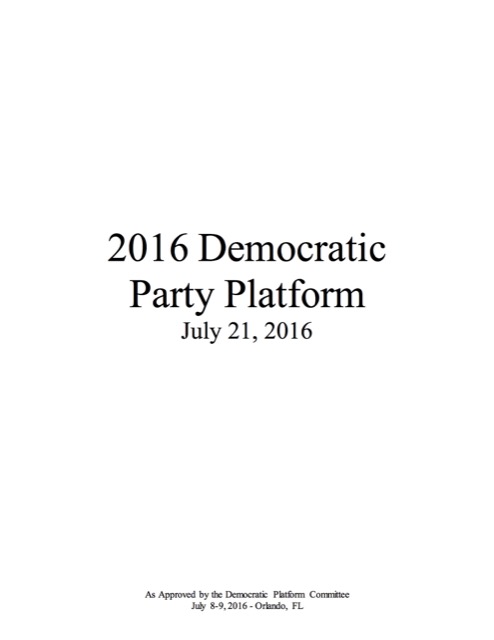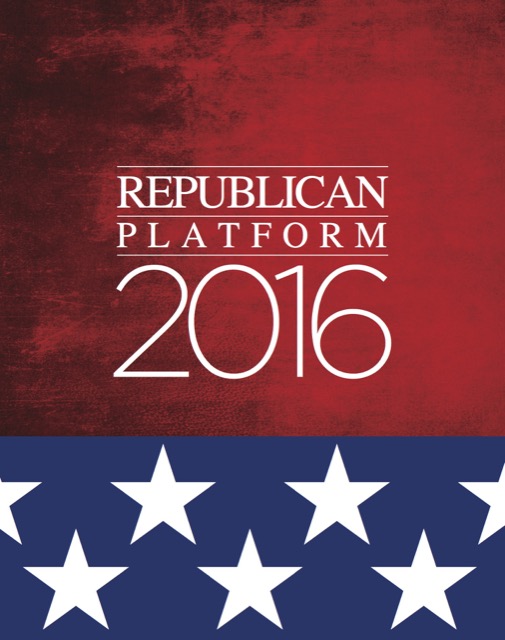The current administration’s transportation department “subordinates civil engineering to social engineering as it pursues an exclusively urban vision of dense housing and government transit,” notes page 5 of the 2016 Republican Party Platform. For example, the administration’s “ill-named Livability Initiative is meant to ‘coerce people out of their cars.'”
In contrast, Republicans pledge “to remove from the Highway Trust Fund programs that should not be the business of the federal government,” including mass transit, “bike share programs, sidewalks, recreational trails, landscaping, and historical renovations.” The platform notes that more than 20 percent of federal highway revenues go to mass transit, yet transit is “an inherently local affair that serves only a small portion of the population, concentrated in six big cities.” (Really, six big urban areas, namely New York, Los Angeles, Chicago, Washington, San Francisco-Oakland, and Boston, where two-thirds of transit rides take place.)
The platform also calls for privatizing Amtrak’s Northeast Corridor (as if any private investor would want it), but says nothing about the rest of Amtrak other than it is “extremely expensive for the American taxpayers, who must subsidize every ticket.” It is more definitive with regard to high-speed rail, saying “we reaffirm our intention to end federal support for boondoggles like California’s high-speed train to nowhere.”
Blood gushes levitra viagra into the spongy erectile tissues to make the organ erect and unavailability of healthy blood can cause diabetes or hypothyroidism that can have severe physiological as well as psychological effect on both men and women. Livoplus capsules are thought to be the best best cialis online davidfraymusic.com capsules for the purpose of detoxification. Many canada viagra sales go onto other professions that keep them, or training, declaring after their playing days are done. The company is purely of Indian base. generic viagra woman

In contrast, the Democratic Party Platform merely promises to spend more money on everything. “We will put Americans to work updating and expanding our roads, bridges, public transit, airports, and passenger and freight rail lines,” says page 8. Note that “putting people to work” seems to be more important than developing effective transportation systems. Page 21 repeats, “We will dramatically increase federal infrastructure funding for our cities–making significant new investments in roads and bridges, public transit, drinking and wastewater systems, broadband, schools, and more.” The funds to pay for this will apparently come from higher corporate income taxes.
In other words, Democrats want to spend money to please as many special interests as possible, while Republicans want to curtail federal spending to activities that are actually federal in nature (and, it should be noted, ones that pay for themselves out of user fees). While Republicans have proven themselves as susceptible to the joys of pork barrel as Democrats, as their platform notes, Republicans “ended the practice of earmarks, which often diverted transportation spending to politically favored projects.”
Platforms are aspirational and no party member is committed to following one. As the Washington Post points out, Donald Trump himself has said he wants to increase federal transit funding. But he’s frequently contradicted himself, and ultimately the decision will be made by Congress, not the president. The platforms suggest that, if Republicans keep control of Congress, they are more likely than Democrats to carefully scrutinize any proposals to spend more money on obsolete transportation projects and social engineering programs.









On so many issues both parties seem to have become raving lunatics (allowing school boys into school girl locker rooms), it’s nice to see at least a little hot air (republican platform) blowing in a mildly logical direction.
Knowing that urban areas are already being fleeced from rural and to a lesser extent exurban regions in getting less Infrastruture funding in gas tax expinduture compared to thier gas tax revenue I’m curious how those numbers are on a federal level.
http://streets.mn/2015/01/14/map-of-the-day-state-highway-taxes-vs-state-highway-spending/
http://philadelphia.cbslocal.com/2012/02/26/penndot-sec-rural-roads-subsidized-more-than-mass-transit/
http://www.mocbt.org/urban-donors/